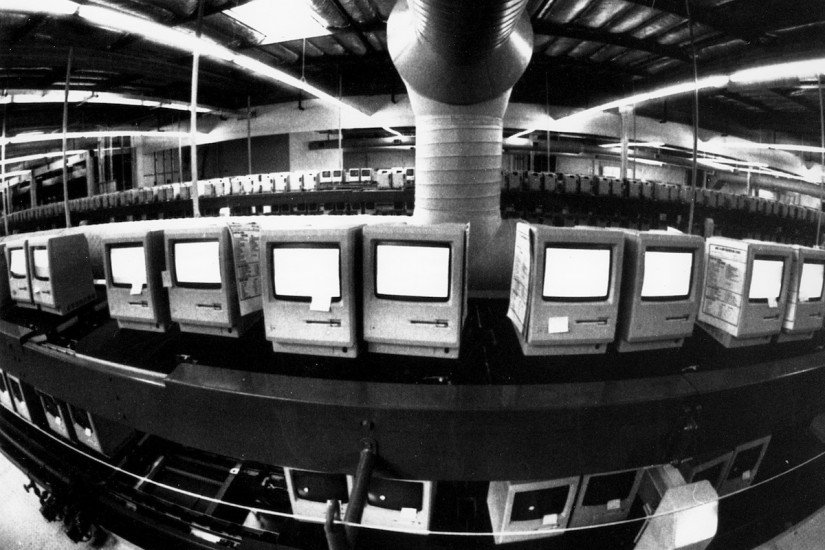When we think of undocumented workers, we tend to think of farmworkers or those doing menial service jobs like hotel housekeeping. And yet undocumented workers have been foundational to the rise of our most vaunted hub of innovative capitalism: Silicon Valley.
If any industry should be automated, it would be the high-tech world of electronics. In 1984 the iconic Apple even touted its “Highly Automated Macintosh Manufacturing Facility,” bragging that “A Machine Builds Machines.” Yet Apple’s factory, like all the other electronic factories, was shockingly old-fashioned. There were more robots in Detroit’s auto factories than in Silicon Valley. The flexibility of electronics production in Silicon Valley, despite all the technical wizardry, came from workers not machines.
And while these companies employed many high-skilled, highly paid engineers, Silicon Valley became the tech hub of the world thanks to a very different set of workers. Unlike the postwar industries that created a middle class from union wages, electronics expanded in the 1970s and ’80s through low-cost, often subcontracted, often undocumented labor. Instead of self-aware robots or high-dollar professionals, it was women of color, mostly immigrants — hunched over tables with magnifying glasses, assembling parts sometimes on a factory line, sometimes on a kitchen table — who did the necessary but toxic work of semiconductor manufacturing. Many of the undocumented workers were from Mexico, while many of the documented ones were from there and Vietnam.
Consider Ampex, a leading audio manufacturer, whose 1980s assembly room looked like most in Silicon Valley: all women, and mostly women of color. Automation was not an option because the products changed too quickly to recoup the investment in machinery.
The tools these women used were hardly futuristic. In fact, they were one of the most ancient tools in existence — their fingernails. The women grew their nails long on each hand so that they could more easily maneuver the components onto the circuit boards. Tongs were an option, but fingernails worked better.
The high-end audio at Ampex was made possible by low-end subcontracting. In Quonset huts, temporary workers dropped off and collected subcontracted chemical processing that was too dangerous to be done by regular Ampex employees. The front and back doors of the huts were open, some lazily turning fans were on the ceiling, but otherwise there was no ventilation.
The workers stoked fires beneath vats of chemicals, some of which boiled. In the vats, the subcontracted workers dipped metals and printed circuits, which temps collected and returned to Ampex.
And this wasn’t even the bottom rung of the electronics industry. The bottom-rung of the electronics industry was not in a small factory or a Quonset hut, but a kitchen.
Investigators found that somewhere between 10 and 30 percent of electronics firms subcontracted to “home workers.” Like garment workers taking in sewing in the 1880s, electronics workers in the 1980s could assemble parts in their kitchen. A mother and her children gathered around a kitchen table assembling components for seven cents apiece. These little shops put together the boards used by big companies like Ampex.
